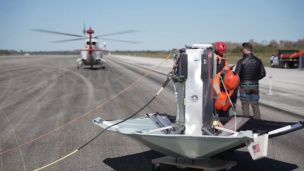This morning, Kall Morris Inc. (KMI) announced that it’s notched an agreement with the US Air Force to explore its proposed method to dock with uncontrolled pieces of debris in orbit for removal.
TumblEye-ing: Under the contract, Kall Morris plans to test its TumblEye system for active debris removal (ADR) applications for USAF.
Removing a piece of debris from orbit that is A) not designed for retrieval and B) tumbling uncontrollably through space is technically difficult and risky.
- KMI’s TumblEye system is designed to use data collected by a camera onboard a servicing spacecraft, put it through a machine learning algorithm, and determine how the target object is spinning in each axis.
- From there, the servicer’s operator can determine the best approach for capture.
“By predicting the behavior and telemetry of in-space objects, we will enable existing docking procedures for targets like the ISS and spacecraft to be used for docking with debris,” Adam Kall, KMI cofounder and director of science, said in a release.
The DoD angle: As Earth’s orbit gets more congested, the DoD has to consider multiple avenues to protect its space assets, and it’s exploring adding ADR technology to its toolbox through a handful of avenues. This award from USAF slots into that larger Pentagon initiative.




